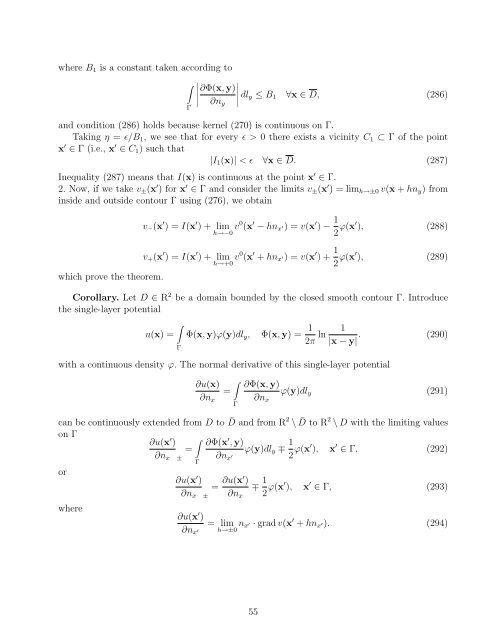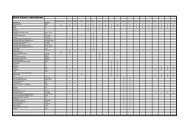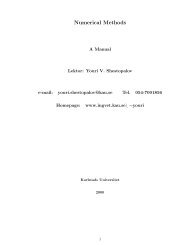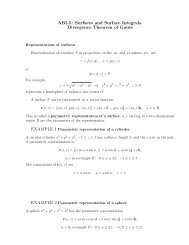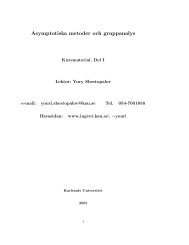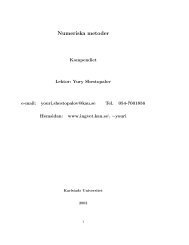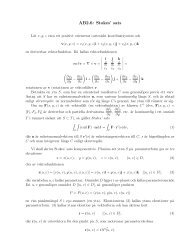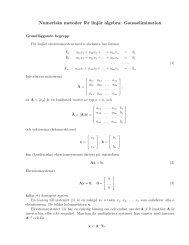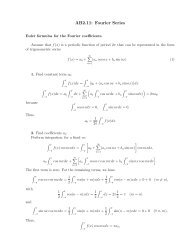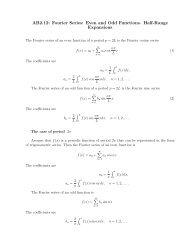You also want an ePaper? Increase the reach of your titles
YUMPU automatically turns print PDFs into web optimized ePapers that Google loves.
where B 1 is a constant taken according to∫Γ∣ ∂Φ(x, y) ∣∣∣∣ dl∣y ≤ B 1 ∀x ∈ D, (286)∂n yand condition (286) holds because kernel (270) is continuous on Γ.Taking η = ɛ/B 1 , we see that for every ɛ > 0 there exists a vicinity C 1 ⊂ Γ of the pointx ′ ∈ Γ (i.e., x ′ ∈ C 1 ) such that|I 1 (x)| < ɛ ∀x ∈ D. (287)Inequality (287) means that I(x) is continuous at the point x ′ ∈ Γ.2. Now, if we take v ± (x ′ ) for x ′ ∈ Γ and consider the limits v ± (x ′ ) = lim h→±0 v(x + hn y ) frominside and outside contour Γ using (276), we obtainwhich prove the theorem.v − (x ′ ) = I(x ′ ) + limh→−0 v0 (x ′ − hn x ′) = v(x ′ ) − 1 2 ϕ(x′ ), (288)v + (x ′ ) = I(x ′ ) + limh→+0 v0 (x ′ + hn x ′) = v(x ′ ) + 1 2 ϕ(x′ ), (289)Corollary. Let D ∈ R 2 be a domain bounded by the closed smooth contour Γ. Introducethe single-layer potential∫u(x) =ΓΦ(x, y)ϕ(y)dl y , Φ(x, y) = 12π ln 1|x − y| . (290)with a continuous density ϕ. The normal derivative of this single-layer potential∫∂u(x)=∂n xΓ∂Φ(x, y)∂n xϕ(y)dl y (291)can be continuously extended from D to ¯D and from R 2 \ ¯D to R 2 \ D with the limiting valueson Γ∂u(x ′ ∫) ∂Φ(x ′ , y)=ϕ(y)dl y ∓ 1 ∂n x ± ∂n x ′2 ϕ(x′ ), x ′ ∈ Γ, (292)orwhereΓ∂u(x ′ )∂n x ±= ∂u(x′ )∂n x∓ 1 2 ϕ(x′ ), x ′ ∈ Γ, (293)∂u(x ′ )∂n x ′= limh→±0 n x ′ · grad v(x′ + hn x ′). (294)55


